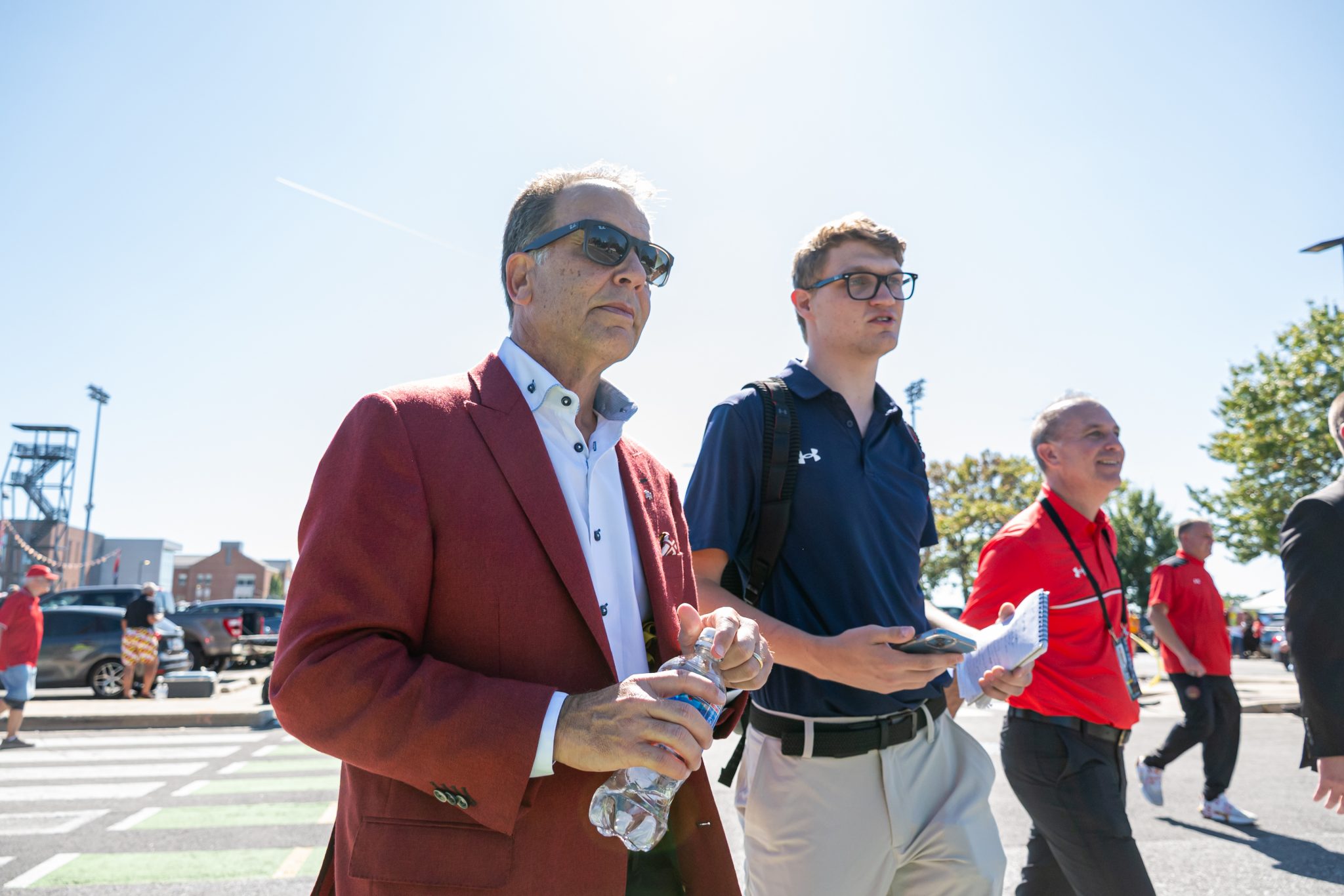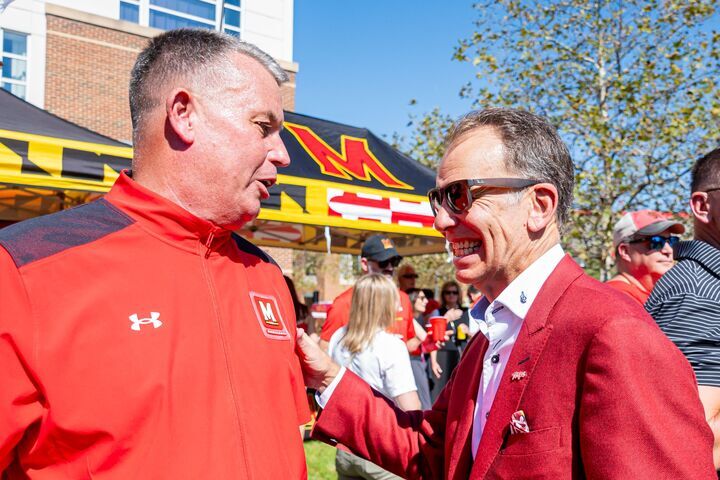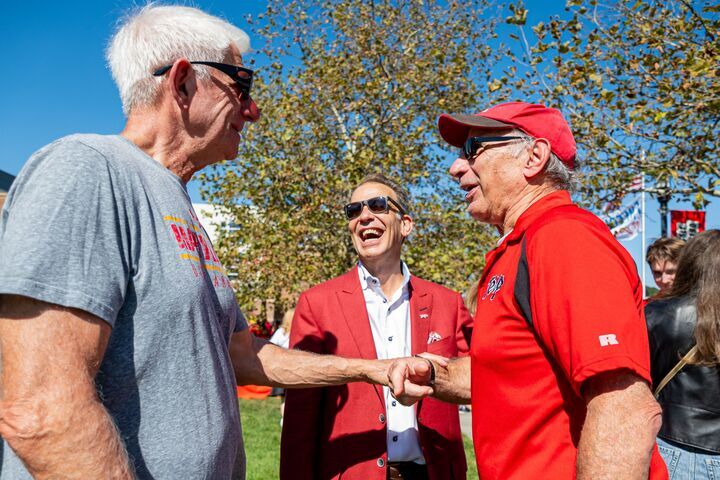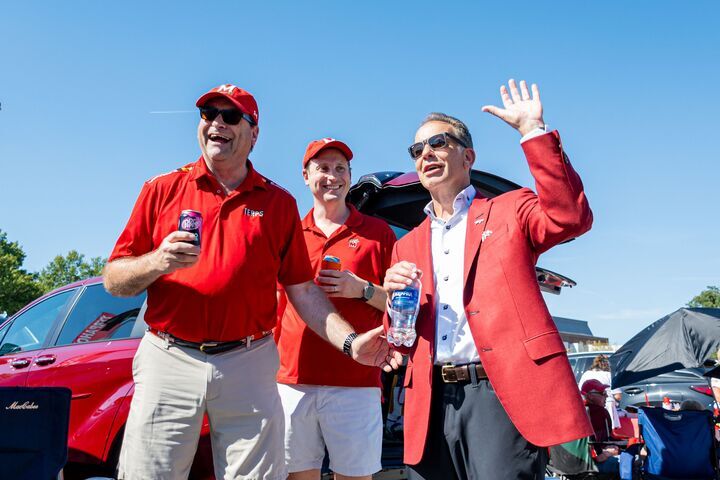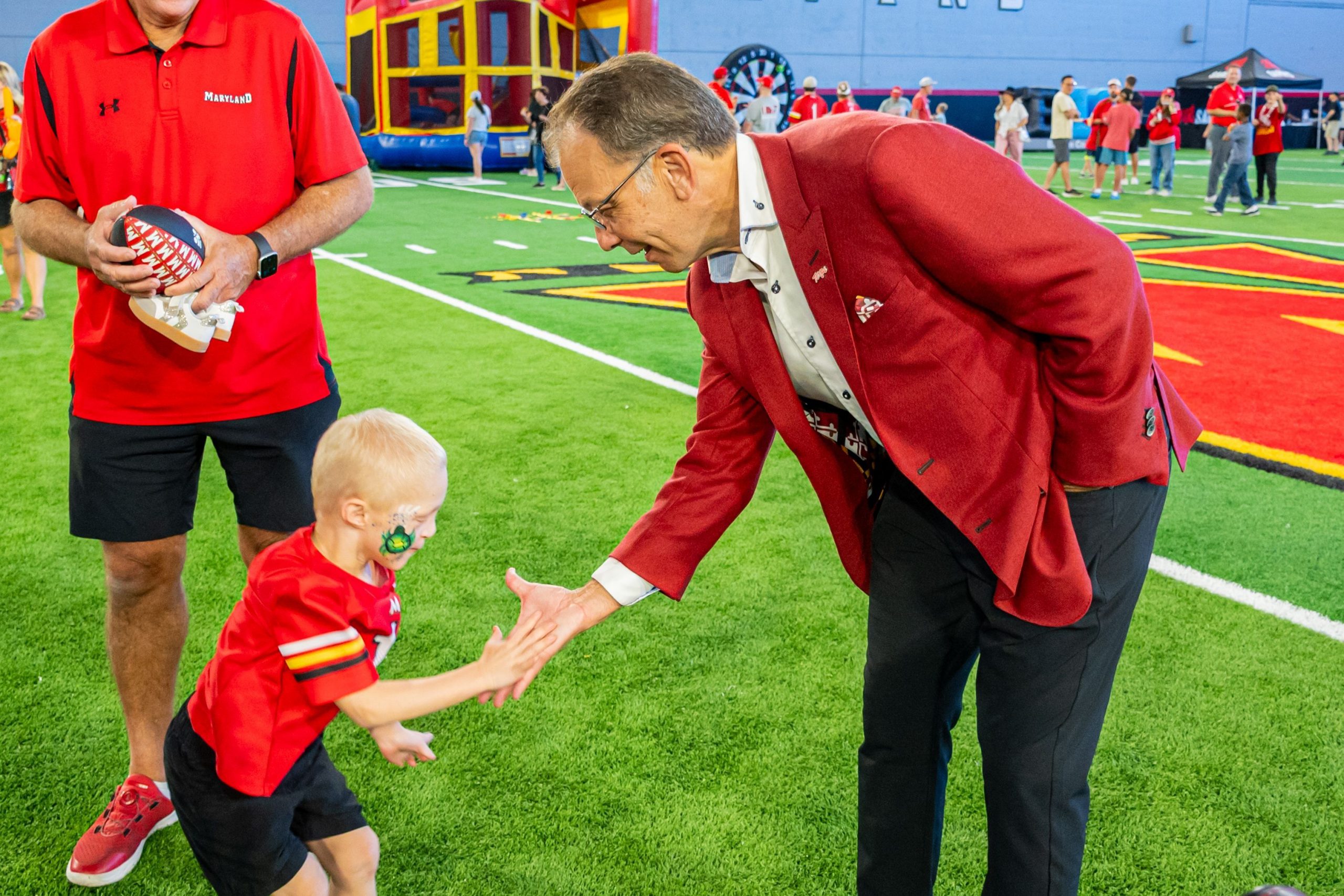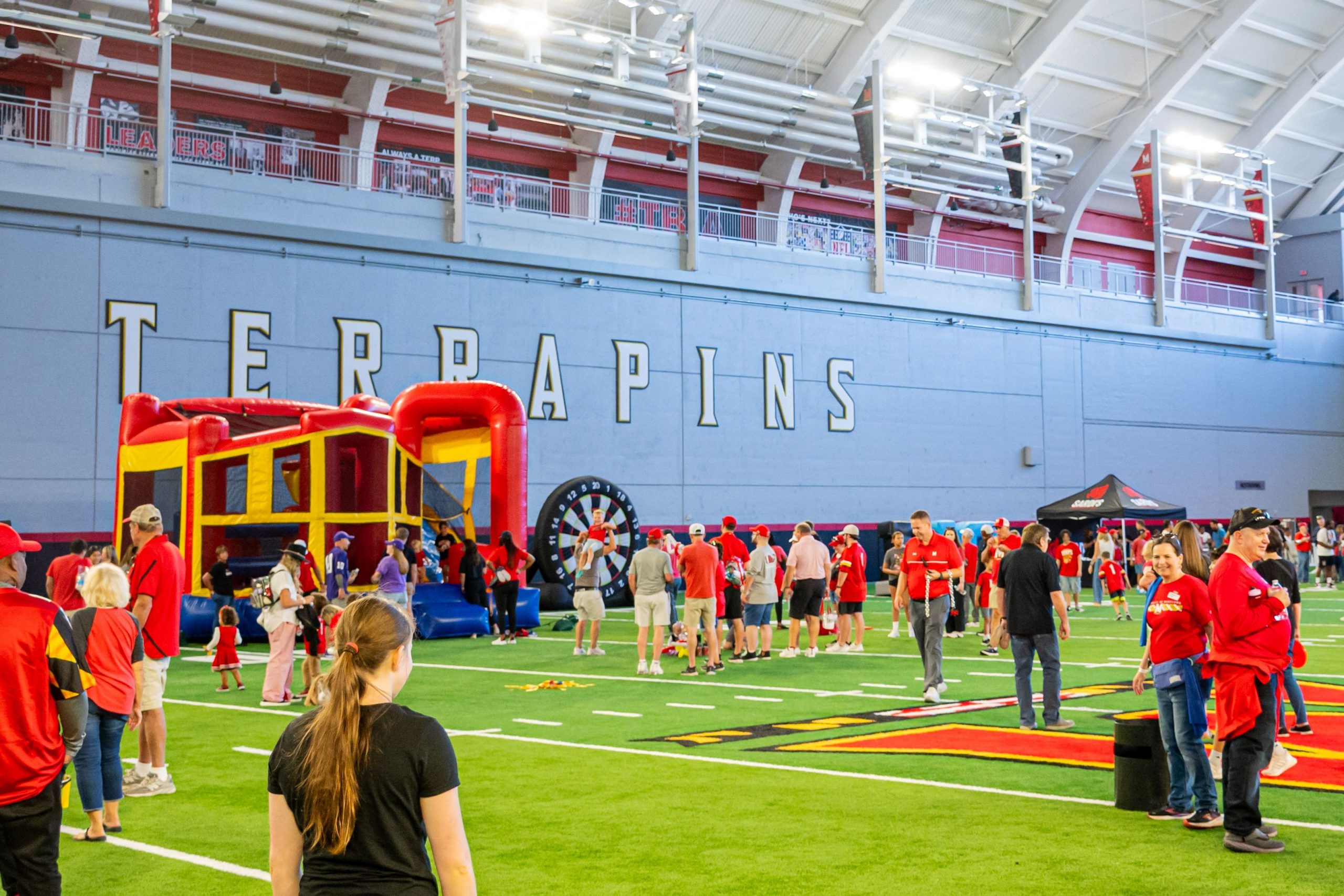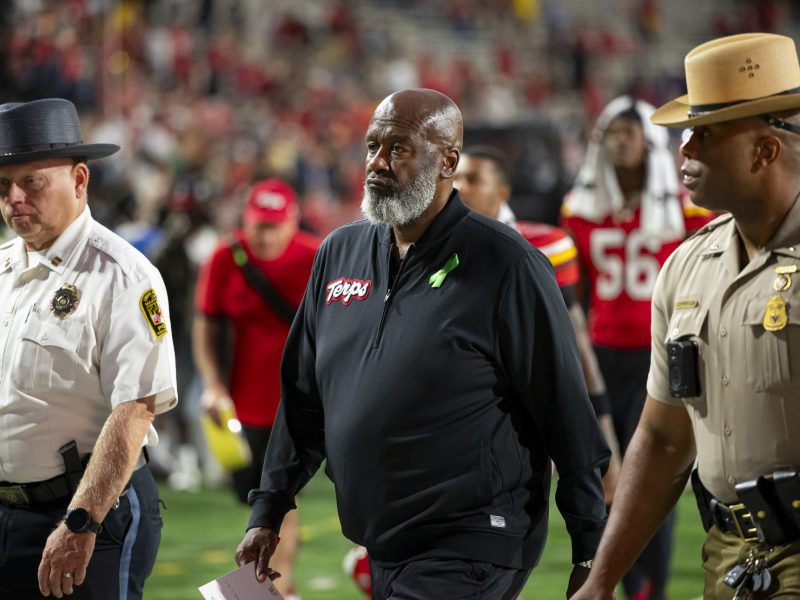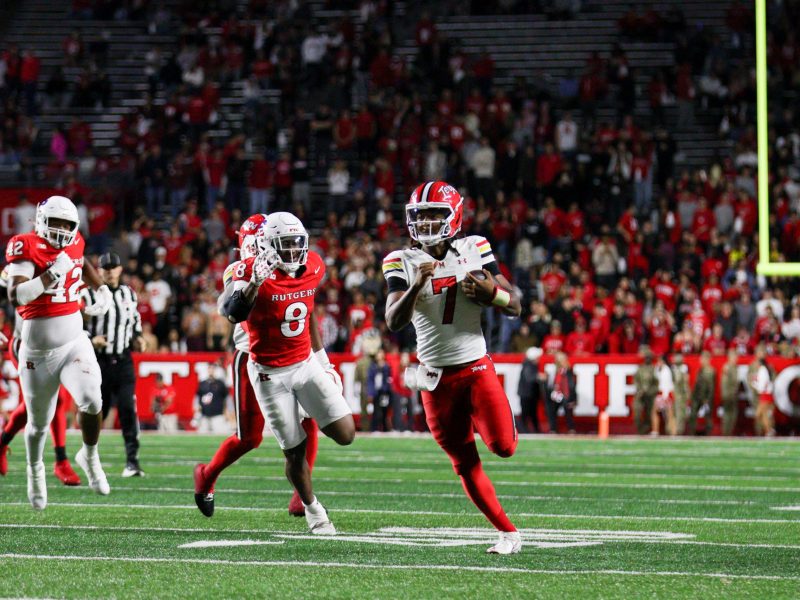Jim Smith’s white Under Armour sneakers cut through the grass and clusters of fans at a pregame tailgate before Maryland football’s game against Washington on Oct. 4.
The Terps’ first-year athletic director weaved through crowds, shaking hands at every turn.
“Hopefully you will all come back next week,” Smith told fans at a pregame tailgate. “This is a sellout today. We have a home-field advantage like we’ve never had before.”
The Diamondback followed him on Saturday as he threaded the masses, paused for conversations and greeted fans. Maryland athletics views Smith’s visibility as essential to turning SECU Stadium into a hotspot.
His first stop was a tailgate hosted by boosters Scott Weitz and Joel Pitt, where about 650 people gathered. A ’90s rock band played as Maryland cheerleaders performed.
Smith’s white dress shirt hung open at the collar with a red suit jacket draped over his shoulders under the 80-degree sun.
“[Tailgating] is important for us,” Smith said as Sublime’s “Santeria” played in the background. “Football gameday is about community. We’ve got to facilitate an incredible community.”
[Maryland football blew a 20-point lead to Washington. These 3 stats tell why.]
Saturday’s sellout was Maryland’s first since 2023 and drew 46,185 fans — the fifth-largest crowd of coach Michael Locksley’s tenure. But the 24-20 defeat was a familiar script for Terps fans.
Maryland has dropped eight of its 10 most attended home games under Locksley, with crowds shrinking by more than 4,000 fans on average in the home game after a loss.
Smith said the real key to attendance is whether fans think Maryland has a chance.
“As long as you’re going to continue to believe the team can win, I think you’ll continue to have good crowds,” Smith said.
Senior associate athletic director and chief development officer Kirby Mills, who oversees donor engagement with the Terrapin Club, said his team works to build connections weekly, aiming to grow Maryland’s game day culture organically so it isn’t tied solely to team success.
Maryland officials said early-season football ticket sales are stronger this year, citing recent marketing pushes and renewed visibility. They declined to provide specific figures.
Weitz, who has hosted Maryland’s largest tailgates for 20 years and has visited every Big Ten stadium, said expanding tailgates is key to elevating Maryland’s game day atmosphere.
“Maryland isn’t where it needs to be, but it can be,” Weitz said. “We need to have giant tailgates where people can walk up and just pay money and join.”
Fernando Palacios, a Maryland fan since 1983, echoed a common concern. While the program boasts strong tailgate culture, traffic and parking remain major issues. He said fans are often funneled to wrong entrances.
Palacios said the atmosphere in College Park feels on the verge of breaking through, recalling sold-out crowds during his time as a student — a contrast to recent years when opposing fans have filled many big games.
“This fanbase is a bubbling pot, just waiting for something big,” Palacios said.
[Brayden Marko wants to be next in Maryland football’s school of tight ends]
Smith worked his way through several more tailgates. He said visibility is the only way to truly hear fans — but that outreach hasn’t been limited to gamedays.
Since taking the job, Smith’s X and Instagram feeds have been filled with Terps results and fan interactions. He’s also appeared on SiriusXM, 105.7 The Fan, Big Ten Network and many other outlets.
Smith tweeted more in the single week leading into the Washington game than former athletic director Damon Evans has since leaving for SMU in March. Smith said he never pitched visibility during his interviews, assuming it was simply part of the job.
“He’s exactly what Maryland needed,” said Kevin Plank, Under Armour founder and Maryland alum. “He’s going to pull this athletic department together.”
Smith moved into the Jones-Hill House before the game for the Terpsville Fan Fest — where cornhole, inflatable bounce houses, face painting and more games are set up across the turf in the Terps’ practice facility three hours before kickoff.
Senior associate athletic director Carrie Blankenship orchestrated the idea, which Smith views as an investment for kids to grow up as Terps fans.
“It makes [my son] want to come to the game,” said George Rodman III, who brought his 3-year-old. “It’s great to have the team walk with the band and then come in here afterwards. It’s a great experience.”
Maryland’s student section thinned in the second half against Washington. Some students pointed to the sun and lack of shade in the section as reasons to leave early, as well as previous blowouts. Some said halftime or post-third quarter events and giveaways could help them stay.
At Wisconsin, Smith noted, fans stayed for the traditional “Jump Around” even while their team trailed big against the Terps. He stressed that lasting traditions at Maryland must come from students rather than administrators, and sees naming the student section as a first step toward building tradition.
“A bunch of old guys and old women come up with an idea — it’s not as good as if the students come up with it themselves,” Smith said.
During the game, Smith watched a few drives on the field before mingling with donors and fans in Tyser Tower. He then returned for jumbotron presentations and tried to stop by the student section. His day began at 7 a.m. and didn’t end until he got home at about 8:45 p.m.
After three cups of coffee throughout the day, he usually watches most of the game on recording later.
Every handshake and visit is about one thing in Smith’s eyes — building a stronger Maryland community — one that is still waiting for the breakthrough that finally pulls other Terps fans fully on board.
